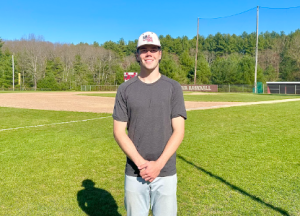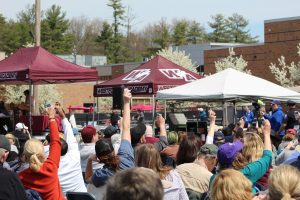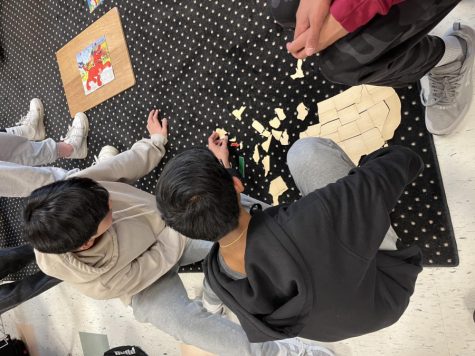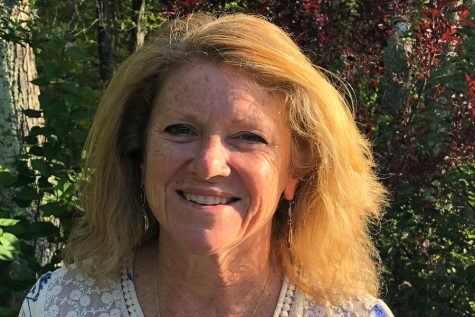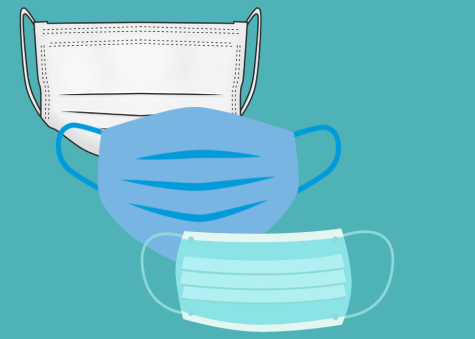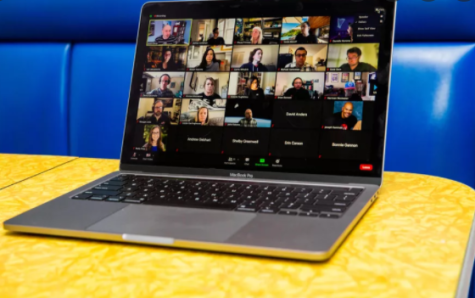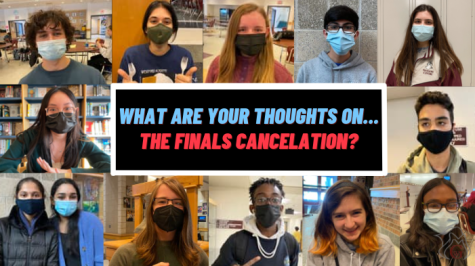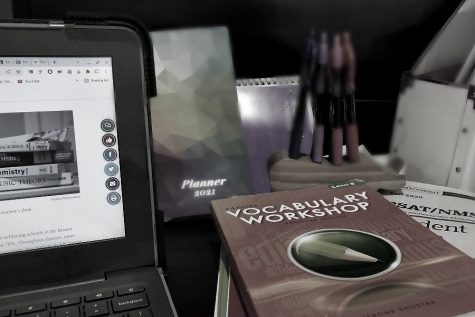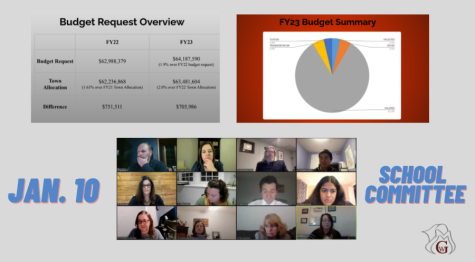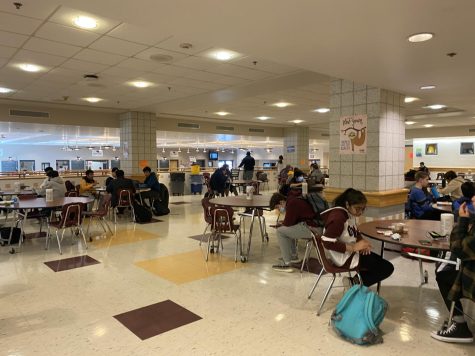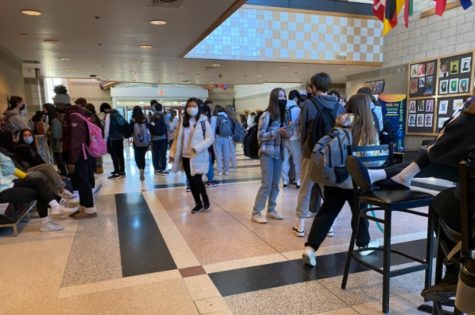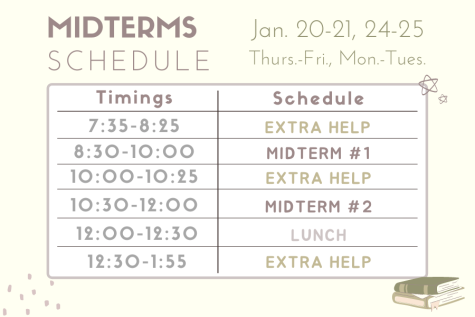Teachers begin to prepare for full-return
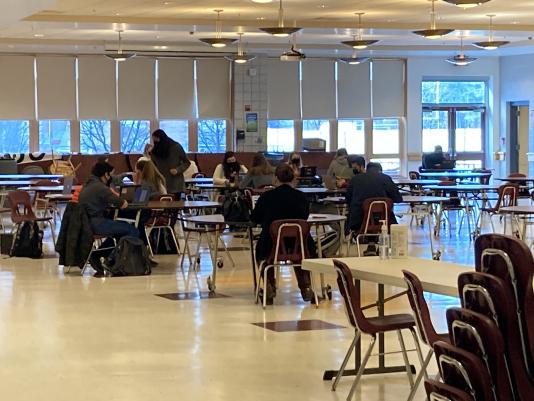
Students working in the cafeteria before the full return. What will the changes to classes look like when students return to the building on April 26?
April 6, 2021
Teachers are in the process of making changes to their classrooms and protocols in order to accommodate the larger classes they will be teaching after April break, specifically on April 26. Since the transition from hybrid learning to full-time learning is two weeks away, many teachers have been busy organizing seating charts, moving desks, and making plans for full-time classes.
Teachers have started adding more chairs to their classes and have received a list of the students who will be RLA and in-person. They will have only the required number of desks that they will need to fit the number of students in the classroom; in order to still have the three feet of distance and space between students. One of the teachers who has been working with the custodial staff to rearrange their classrooms is wellness teacher Melanie Jozokos.
“My classes tend to be big,” Jozokos said. “But, we just got notice of which students are going to be RLA and which students are going to be coming back. So, I have been working with the custodial staff, Mr. Griffin, who is going to help me get the number of desks I need.”
It is also important to remember that there will now be double the number of students in the building compared to the hybrid model because the seniors will be leaving for their senior experience projects.
WA will be at roughly 75% its normal capacity, not including the RLA students who will remain at home continuing digital learning, because of seniors leaving.
“Guidance is doing the best job possible to make sure that our classes are as even as possible,” physical education teacher Maria Henderson said. “Our department director has given us guidance on what activities we can and can’t do to ensure that no equipment is shared.”
Similar to the current model, materials and equipment will not be shared or sanitized between classes. For example, if a physical education class will be playing tennis, everyone in that class would have their own racket and balls, and the equipment would be sanitized and sprayed down after they are done being used.
Even though it may seem different, many of the protocols for the full return will still be very similar to the previous model. Students will still be required to wear masks and social distancing in class.
“I think everyone is going to have a little bit of anxiousness coming back,” math teacher Erik Ruhmann said. “But I think once we all get here and after a week or two, everybody will probably be really glad to be back.”


